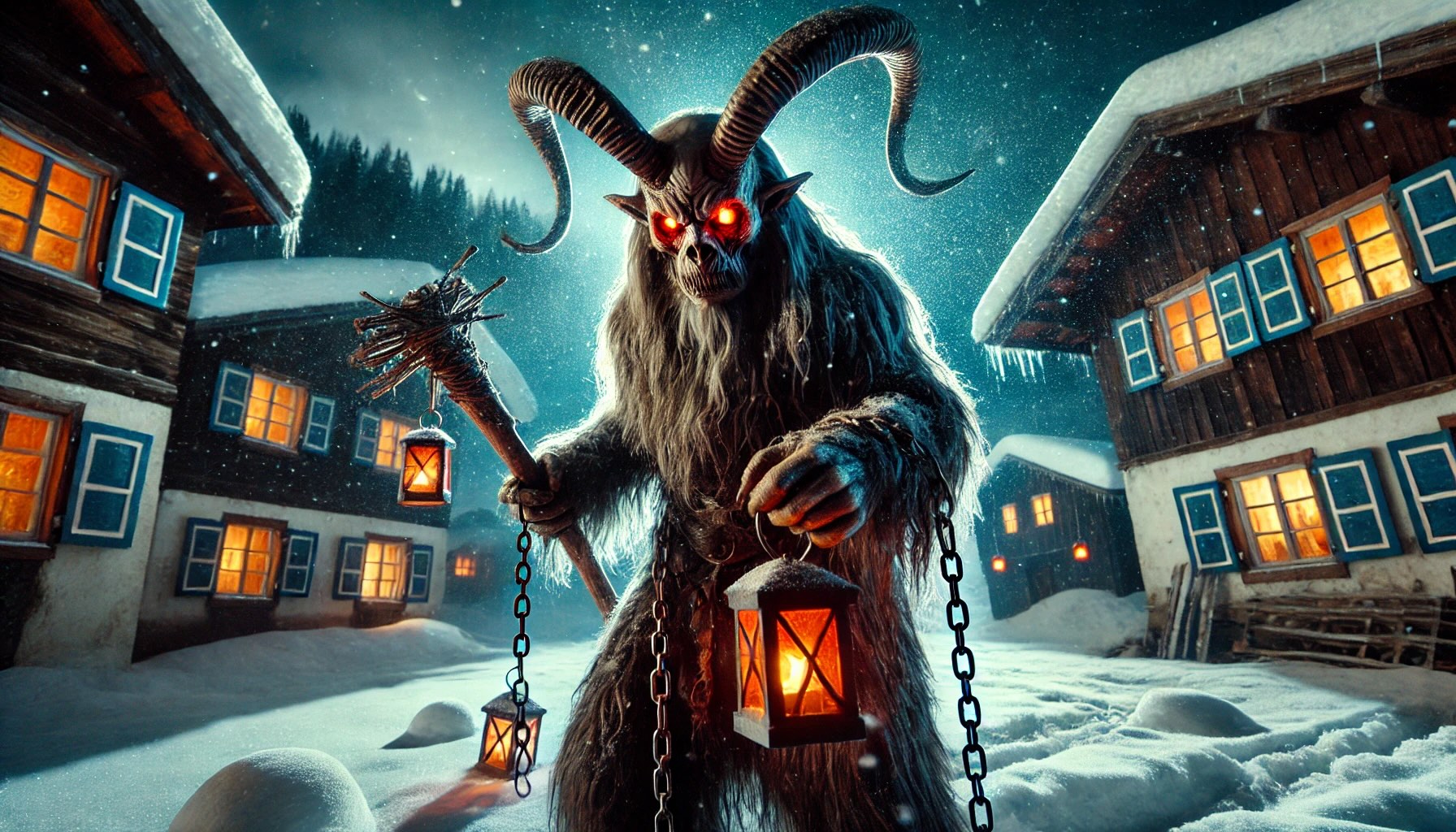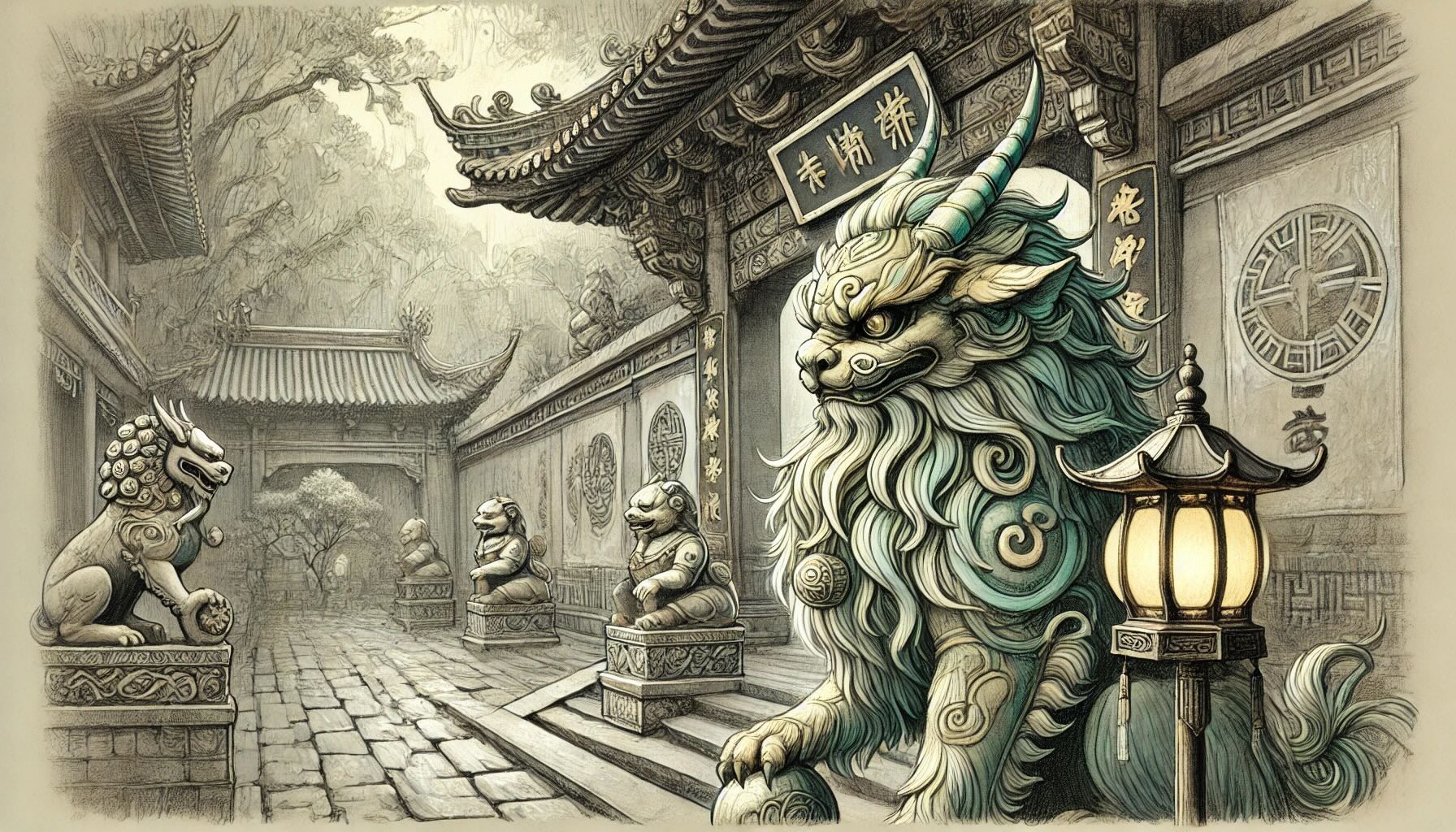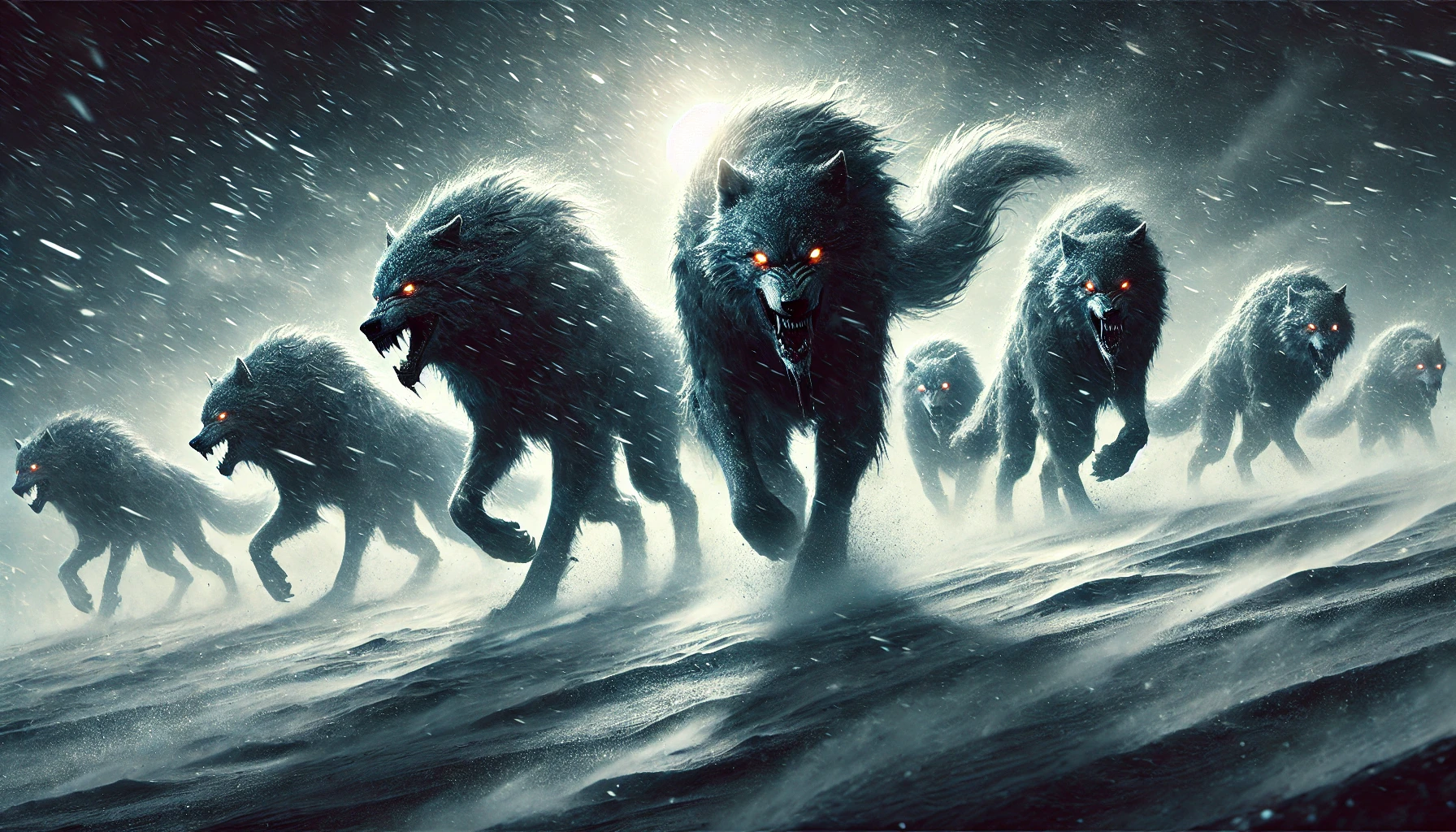The Dark Side of Holiday Cheer
The stillness of winter nights brings more than snowfall and starlight—hidden within the season are figures both fearsome and real. Across villages and snow-covered forests, shadowy forms stir as the year wanes. Some come to punish, others to guard, but all carry an air of mystery and unease. Villagers whisper of eerie sounds in the dark and strange figures by the firelight, warning those who stray too far from safety. In this season of long nights, these beings are not stories—they are waiting.
1. Krampus (Austria and Germany)
The metallic clink of chains and the acrid smell of charred wood warn of Krampus’s approach. This horned beast, with cloven hooves and birch switches, punishes naughty children during the Christmas season. On Krampusnacht, December 5th, villagers in Alpine towns don fearsome costumes, chasing onlookers through the streets. But Krampus is more than a fright—tales say he carries the worst offenders away in his sack, never to be seen again. If you hear his chains in the distance, hide quickly, or your misdeeds may come back to haunt you.
2. Frau Perchta (Austria and Germany)
A sudden chill or the faint sound of rustling skirts may signal the approach of Frau Perchta. During the Twelve Days of Christmas, she inspects homes, ensuring chores are completed and houses are spotless. For the diligent, she appears as a radiant maiden who leaves silver coins as rewards. But for the lazy, she transforms into a terrifying hag, said to slice open bellies and fill them with straw. Her chilling visits are a stark warning to keep homes spotless and chores complete before the holidays.
3. Gryla (Iceland)
The heavy crunch of snow and a foul stench signal the arrival of Gryla, the monstrous giantess of Icelandic lore. Descending from her icy mountain lair, she hunts for misbehaving children to fill her bubbling cauldron. With horns, multiple tails, and a grotesque hunger, Gryla embodies the harshness of winter and the consequences of bad behavior. While her mischievous offspring, the Yule Lads, have softened into gift-givers, Gryla’s name remains a chilling reminder of Yule’s darker traditions. If you sense her presence, stay inside and hope you haven’t been too naughty.
4. Yule Cat (Iceland)
Glowing eyes peer from the darkness, and a low growl echoes across the snow—the Yule Cat is on the prowl. This enormous feline targets those who fail to receive new clothes by Christmas Eve, devouring them as punishment. Rooted in Iceland’s wool industry, the legend encouraged hard work and gift-giving to protect loved ones from its wrath. Even now, families exchange clothes during the holiday season to ensure no one falls victim to the Yule Cat’s hunger. Be sure to unwrap your new sweater—it might just save your life.
5. Belsnickel (Germany)
The shuffle of heavy boots and a knock at the door announce the arrival of Belsnickel. Wrapped in ragged furs and carrying birch switches, he quizzes children on their behavior and readiness for the season. Some say he throws candies on the ground, testing if children’s greed leads them astray. The well-behaved receive treats, while the naughty face a swift lash. With his birch switches and sharp eye, Belsnickel ensures that no misdeed escapes his notice, keeping holiday traditions alive with his stern presence.
6. The Kallikantzaroi (Greece)
The Kallikantzaroi emerge from their underworld lairs during the Twelve Days of Christmas, bringing chaos and mischief. Small, hairy, and delighting in pranks, they steal food, extinguish fires, and overturn tables. Greek families guard against their antics by burning incense and keeping fires lit. In some regions, colanders are placed outside, as the goblins are said to be distracted by counting the holes until dawn. Their chaotic antics keep families on edge, ensuring fires are lit and precautions are taken throughout the season.
7. Hans Trapp (France)
Disguised as a tattered scarecrow, Hans Trapp stalks the forests of Alsace, his hollow eyes scanning for wandering children. Once a cruel nobleman who reveled in dark magic and greed, his evil deeds angered the heavens, leading to his death by a bolt of divine lightning. Yet death could not stop him. Villagers speak of his looming figure near the outskirts, where his ragged clothes flutter in the cold wind. Parents warn their children to stay close to the hearth during the festive season, for those who stray too far may never return.
8. The Tomten (Scandinavia)
By the light of the winter moon, the Tomten prowls through farmyards, his sharp eyes watching from the shadows. This small, bearded creature, clad in a red cap, serves as both protector and enforcer. Farmers say he guards livestock from harm, but his temper is as fierce as the northern winds. Neglect your duties or forget his bowl of porridge with butter, and his mischief will turn to malice—animals fall ill, tools vanish, and restless nights await. If you see small footprints in the snow or feel an unsettling gaze in the dark, beware—you may have angered the Tomten.
9. Knecht Ruprecht (Germany)
The rhythmic strike of a staff against the ground heralds the arrival of Knecht Ruprecht, Saint Nicholas’s loyal companion. Dressed in dark robes, he quizzes children on their prayers, rewarding the faithful with gifts and punishing the disobedient with his switch. Some believe he carries a sack filled with coal for the especially naughty. His stern demeanor and unwavering presence ensure that every child faces the consequences of their actions during the festive season.
10. Pere Fouettard (France)
Soot-streaked and grim, Pere Fouettard prowls the snow-dusted streets, whip in hand, seeking out misbehaving children. Once a butcher who lured his victims to their doom, his vile deeds were uncovered when Saint Nicholas resurrected the slain and condemned Pere Fouettard to eternal penance. Now bound to serve the saint, he metes out swift and harsh punishments, leaving no misdeed unchecked. Parents speak in hushed tones of his shadowy figure and the sting of his whip, warning children to tread carefully during the festive season—or risk facing his wrath.



